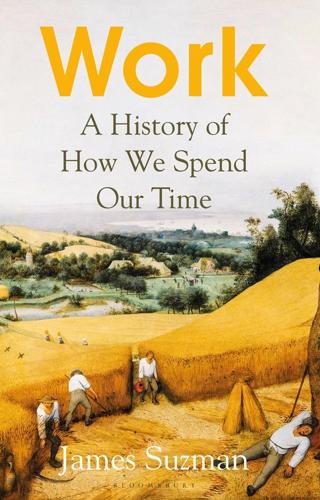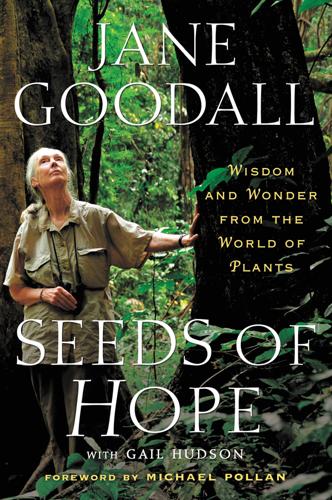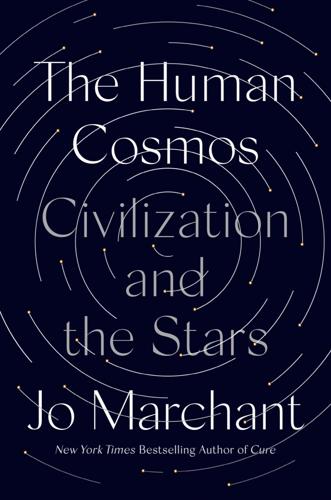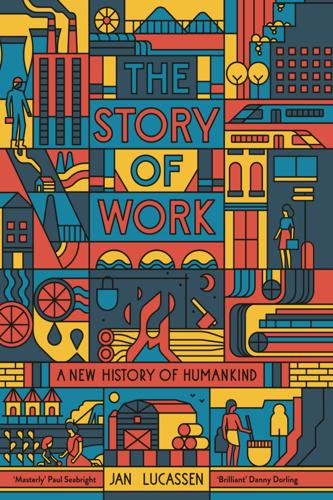
Guns, germs, and steel: the fates of human societies
by
Jared M. Diamond
Published 15 Jul 2005
Ethiopi- ans also domesticated many locally available wild species to obtain crops most of which are still confined to Ethiopia, but one of them (the coffee bean) has now spread around the world. However, it is not yet known whether Ethiopians were cultivating these local plants before or only after the arrival of the Southwest Asian package. In these and other areas where food production depended on the arrival of founder crops from elsewhere, did local hunter-gatherers themselves adopt those founder crops from neighboring farming peoples and thereby become farmers themselves? Or was the founder package instead brought by invading farmers, who were thereby enabled to outbreed the local hunt- ers and to kill, displace, or outnumber them? In Egypt it seems likely that the former happened: local hunter-gather- ers simply added Southwest Asian domesticates and farming and herding techniques to their own diet of wild plants and animals, then gradually phased out the wild foods.
…
It turns out that the eastern U.S. founder crops were four plants domes- ticated in the period 2500-1500 B.C., a full 6,000 years after wheat and barley domestication in the Fertile Crescent. A local species of squash pro- vided small containers, as well as yielding edible seeds. The remaining three founders were grown solely for their edible seeds (sunflower, a daisy relative called sumpweed, and a distant relative of spinach called goose- foot). But four seed crops and a container fall far short of a complete food production package. For 2,000 years those founder crops served only as minor dietary supplements while eastern U.S.
…
Why did the same plant package launch food production throughout western Eurasia? Was it because the same set of plants occurred in the wild in many areas, were found useful there just as in the Fertile Crescent, and were independently domesticated? No, that's not the reason. First, many of the Fertile Crescent's founder crops don't even occur in the wild outside Southwest Asia. For instance, none of the eight main founder crops except barley grows wild in Egypt. Egypt's Nile Valley provides an environment similar to the Fertile Crescent's Tigris and Euphrates Valleys. Hence the package that worked well in the latter valleys also worked well enough in the Nile Valley to trigger the spectacular rise of indigenous Egyptian civilization.

Against the Grain: A Deep History of the Earliest States
by
James C. Scott
Published 21 Aug 2017
At about the same time, archaeologists find scattered evidence of yearlong occupation of many sites—the Natufian Period in the southern Levant and the “prepottery” stage in Neolithic villages in Syria, central Turkey, and western Iran. They generally occur in water-rich areas and subsist largely by hunting and foraging, though there is evidence—disputed—of cereal horticulture and livestock rearing. Not in dispute, however, is that between 8,000 and 6,000 BCE, all the so-called “founder crops”—the cereals and legumes: lentils, peas, chickpeas, bitter vetch, and flax (for cloth)—are being planted, though generally on a modest scale. Over the same two-millennia span—the timing vis-à-vis cereals is not clear—domesticated goats, sheep, pigs, and cattle make their appearance. With this suite of domesticates the full “Neolithic package,” seen as the decisive agricultural revolution that marks the beginning of civilization, including the first small urban agglomerations, is in place.
…
., 87–88 fallowing, 112 Farmer’s Almanac, 89–90 Faroe Islands, 102–103 fat, 18, 64 fatty acids, 108–109 Febvre, Lucien, 129 feces, 82, 105–106 fermentation, 41, 65 ferrets, 80 fertility, 29, 82–83, 113–114 fertilizer, 70 filaraisis, 102 Finlay, Moses, 156, 157 fire, xiii accidental, 16 cooking with, 17, 40–43, 84, 91, 196 domestication of, xii, 17, 20, 37–43 early uses of, 3, 11, 19 for landscape sculpting, 17, 38, 40, 41, 66, 68, 69, 70, 90, 110 firewood, 54, 125, 176, 196, 198, 205 fish, 10, 101 human consumption of, 48–49, 51, 53, 56, 64, 65, 70, 88–90, 108, 110, 128, 135 nutrients in, 108 processing of, 144 trade in, 34 flax, 44 fleas, 73, 105 Fletcher, Joseph, 277–278 n. 45 flood-retreat (décrue) agriculture, 20, 66, 72, 93, 120, 124 floods: deforestation linked to, 31 folk memory of, 59–60 in Mesopotamia, 49–50 rice cultivation and, 133 settlements vulnerable to, 97, 122–123, 189, 190, 199–200, 201, 212, 213, 231–232 soils deposited by, 124. See also rainfall foodwebs, 22, 41, 48, 59, 89, 90, 108, 113, 255 fossil fuels, 1, 2 “founder crops,” 44 1491 (Mann), xii foxes, 79, 82 Frederik the Great, king of Prussia, 130 fruits, 41, 69, 112 fermentation of, 65 fire and, 17, 38 seasonality of, 89, 90 sedentism linked to, 51 fungi, 42, 96, 110, 111 Gallic Wars, 157 Garden of Eden, 10, 72 Gaul, 229, 245, 250, 251 gazelle, 50, 53, 77, 88, 94, 101 geese, 18, 53, 103 Gelb, I.

Work: A History of How We Spend Our Time
by
James Suzman
Published 2 Sep 2020
But as rare as it is, cultivation is usually a particularly successful form of mutualism, as evidenced by the success of the few other species that cultivate food, like fungus-farming termites. Some plant species, like the wild wheat and barley of Anatolia and the indigenous millet in East Asia, almost invited domestication. A characteristic of pretty much all the founder crops, like these that form the basis of our diet today and were domesticated thousands of years ago, is that because they were already high-yielding and self-pollinating it took relatively few generations before they achieved the mutations characteristic of domesticity. In the case of wheat, for example, the mutation for its brittle rachis was controlled by a single gene that was already a frequent mutation in most stands of wild wheat, along with the mutations that produced larger seeds.
…
A climate change hypothesis’, American Antiquity, Vol. 66, no. 3, 2001, 387–411. 12Jack Harlan, ‘A Wild Wheat Harvest in Turkey’, Archeology, Vol. 20, no. 3, 1967, 197–201. 13Liu et al., ‘Fermented beverage and food storage’. 14A. Arranz-Otaegui, L. González-Carretero, J. Roe and T. Richter, ‘“Founder crops” v. wild plants: Assessing the plant-based diet of the last hunter-gatherers in southwest Asia’, Quaternary Science Reviews 186, 2018, 263–83. 15Wendy S. Wolbach et al., ‘Extraordinary Biomass-Burning Episode and Impact Winter Triggered by the Younger Dryas Cosmic Impact ∼12,800 Years Ago. 1.

The Dawn of Everything: A New History of Humanity
by
David Graeber
and
David Wengrow
Published 18 Oct 2021
There were constant opportunities for foragers to exchange complementary products – which included foods, medicines, drugs and cosmetics – since the local growth cycles of wild resources were staggered by sharp differences in climate and topography.26 Farming itself seems to have started in precisely this way, as one of so many ‘niche’ activities or local forms of specialization. The founder crops of early agriculture – among them emmer wheat, einkorn, barley and rye – were not The ‘Fertile Crescent’ of the Middle East – Neolithic farmers in a world of Mesolithic hunter-foragers, 8500–8000 bcdomesticated in a single ‘core’ area (as once supposed), but at different stops along the Levantine Corridor, scattered from the Jordan valley to the Syrian Euphrates, and perhaps further north as well.27 At higher altitudes, in the upland crescent, we find some of the earliest evidence for the management of livestock (sheep and goats in western Iran, cattle too in eastern Anatolia), incorporated into seasonal rounds of hunting and foraging.28 Cereal cultivation began in a similar way, as a fairly minor supplement to economies based mainly on wild resources: nuts, berries, legumes and other readily accessible foodstuffs.
…
It’s important to note that a decline in crop diversity may have commenced within the Fertile Crescent, at roughly the time when the Neolithic farming package was carried north and west towards Europe, via Turkey and the Balkans. By around 7000 bc (the end of the Late Pre-Pottery Neolithic B period) average crop diversity at sites in the Fertile Crescent had dropped from ten or eleven original founder crops to a mere five or six. Interestingly, what followed in this region (during the PPNC period) was a downturn in population, associated with the abandonment of large villages and the beginning of a more dispersed pattern of human settlement. 55. See also Bogaard 2005. 8. IMAGINARY CITIES 1.

Seeds of Hope: Wisdom and Wonder From the World of Plants
by
Jane Goodall
Published 1 Apr 2013
This compared with 657 million tons of rice, 613 million tons of wheat, and 324 tons of potatoes. Approximately 43 percent of the maize produced in the United States in 2012 was sold for biofuel—although there are signs that this industry is in trouble. Wheat—Triticum spp. I am starting with wheat because it was among the founder crops at the dawn of agriculture—archaeological evidence shows that it was grown on the first-known farms carbon-dated to 9000 BC. And because we use the grains of wheat to make bread, and bread has always been an intrinsic part of my own diet. My grandmother Danny used to bake bread, and that heady aroma is a treasured memory from early days at The Birches.

The Human Cosmos: A Secret History of the Stars
by
Jo Marchant
Published 15 Jan 2020
Here was clear evidence of a complex, organized society, with some form of religion, or at the very least sophisticated mythology, all before the invention of farming. What’s more, the pillars of Göbekli Tepe were erected at precisely the place where farming was about to originate. Biologists have pinpointed this small region, between the upper reaches of the Euphrates and Tigris Rivers, as the only place where all seven Neolithic founder crops (chickpea, einkorn wheat, emmer wheat, barley, lentil, pea and bitter vetch) grew together, while genetic studies of hundreds of einkorn and emmer wheat strains have concluded that domesticated versions of both species likely originated from wild strains that grew in the Karacadağ Mountains, just twenty miles or so from Göbekli Tepe.

The Story of Work: A New History of Humankind
by
Jan Lucassen
Published 26 Jul 2021
A few centuries later, the urban Harappa culture, symbolized by the zebu, blossomed in the Indus Valley. These hump-backed cattle, domesticated locally, later spread to western parts of Asia and Africa. This is an example of the third domestication phase, which includes local domestications following the arrival of founder crops from elsewhere.26 But the developments in the Fertile Crescent did not stop. Later, olives, almonds, grapes and date palms were introduced, and these products subsequently spread to neighbouring regions. Today, we see these distribution patterns everywhere and, of course, they continue, albeit in a systematic and industrial way.